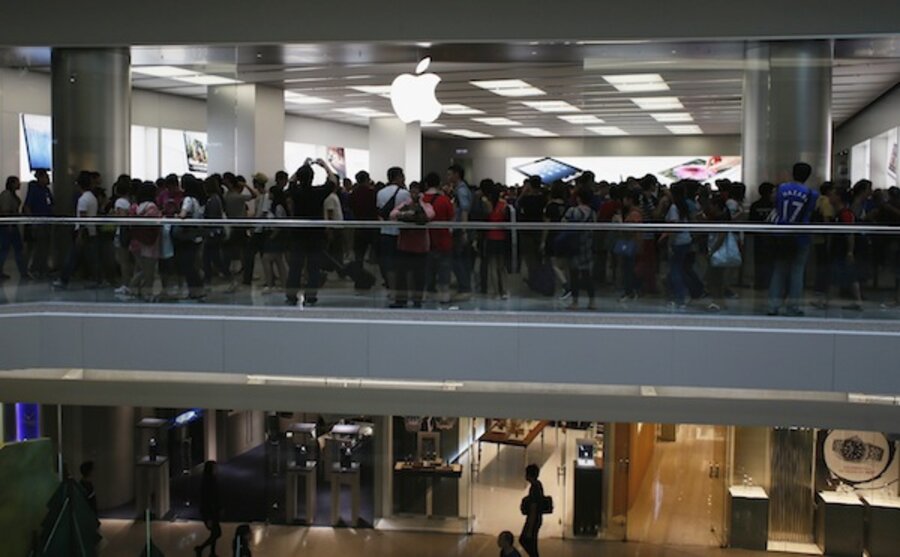What would you pay for an iPad Mini?
Loading...
| New York
Those who follow Apple believe they have figured out most of the particulars of a smaller iPad expected to be revealed on Tuesday. One big question remains, though: What will it cost?
Apple hasn't said anything about the device, but the veil of secrecy it throws over unreleased products has been a see-through affair this year. Most of the details of the iPhone 5 were known well in advance of its launch a month ago.
In the case of the "iPad Mini" (the real name is not known), tech bloggers and analysts expect a device with a screen measuring 7.85 inches (19.9 centimeters) on the diagonal, making it about half the size of the regular iPad. It would be slightly larger than the 7-inch (17.5-centimeter) tablets it's presumably designed to compete with, including Amazon.com Inc.'s Kindle Fire and Google Inc.'s Nexus 7.
The Kindle Fire starts at $159, and the Nexus 7 at $199. Meanwhile, Apple sells the iPad 2 for $399 and the 4-inch iPod Touch for $199. Company watchers are pegging the price of the smaller iPad somewhere in between.
Most of the guesses range from $249 to $299, but the blog 9to5Mac said Monday that the price would be $329. That would make the iPad Mini twice the price of the cheapest Kindle Fire and leave plenty of room for other manufacturers to snap up value shoppers this holiday season. The blog did not disclose its source and has had a mixed record in predicting details on unreleased Apple products.
Analysts such as Brian White of Topeka Capital Markets believe that Apple will also sell a step-up version of the iPad Mini, one with the ability to access 4G cellular networks for an additional monthly fee. That's a feature the cheaper, 7-inch tablets don't have.
Apple is holding the presentation at a theater in San Jose, California, starting at 10 a.m. PDT (1700 GMT). The company typically starts selling a new phone or iPad a week or two after announcing it. But it could treat the new iPad as a minor product update, in which case it could start selling it right after the announcement.
Apple has sold 84 million iPads since their debut in April 2010. One of the first competitors to appear was a Samsung tablet with a 7-inch screen. Apple's late founder, Steve Jobs, made a rare appearance at an October 2010 conference call with analysts — his last — to deride the concept.
"The reason we wouldn't make a 7-inch tablet isn't because we don't want to hit a price point. It's because we don't think you can make a great tablet with a 7-inch screen," Jobs said. "The 7-inch tablets are tweeners, too big to compete with a smartphone and too small to compete with an iPad."
He said the resolution of the display could be increased to make up for the smaller size, but that would be "meaningless, unless your tablet also includes sandpaper, so that the user can sand down their fingers to around one quarter of the present size."
"There are clear limits of how close you can physically place elements on a touch screen before users cannot reliably tap, flick or pinch them. This is one of the key reasons we think the 10-inch (25-centimeter) screen size is the minimum size required to create great tablet apps," he said.
Jobs didn't mention that Apple has had great success developing software that used taps, flicks and pinches on the iPhone, with a screen one quarter of the size he was attacking.
Jobs, who died last October, had strong opinions, but he also changed his mind frequently. The production of a smaller iPad would not be the first time Apple has made a product that Jobs initially dismissed as ridiculous.
In an internal email sent in January 2011, Apple senior vice president Eddy Cue said that a 7-inch tablet would work well and that Jobs was starting to come around to the idea. The email surfaced as part of Apple's patent trial against Samsung Electronics Co. this year.
Apart from the smaller iPad, Apple is also expected to refresh some other products. There's speculation that the MacBook will come in a version with a 13-inch, high-resolution "Retina" screen. The 15-inch (37.5-centimeter) MacBook got an option for a Retina screen this summer.





